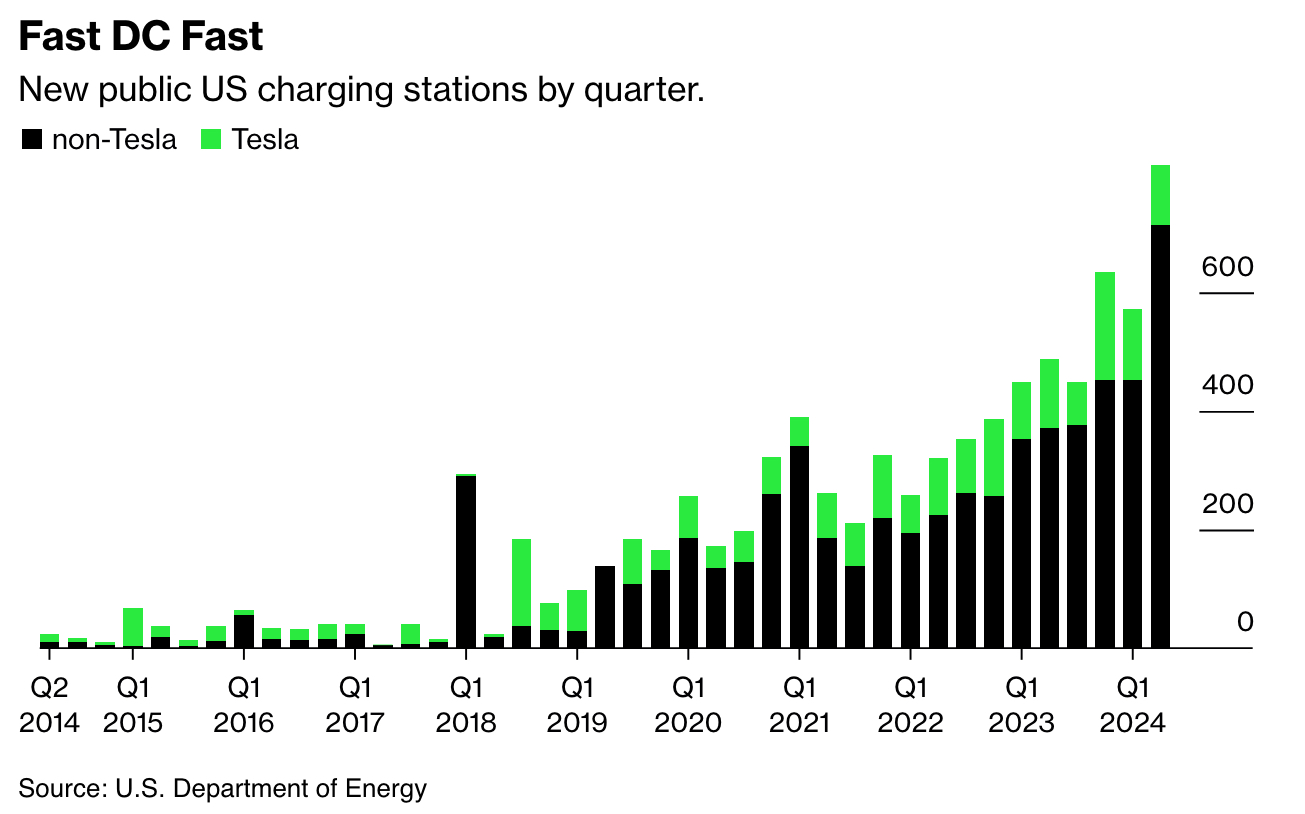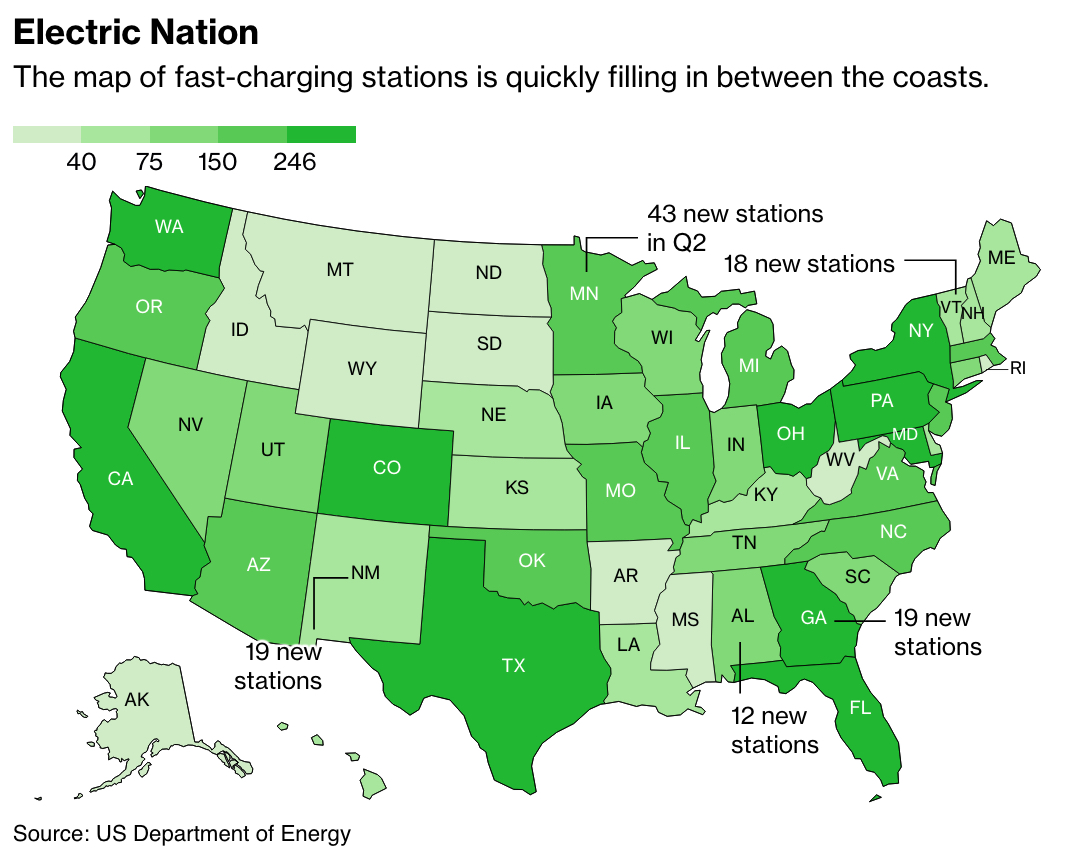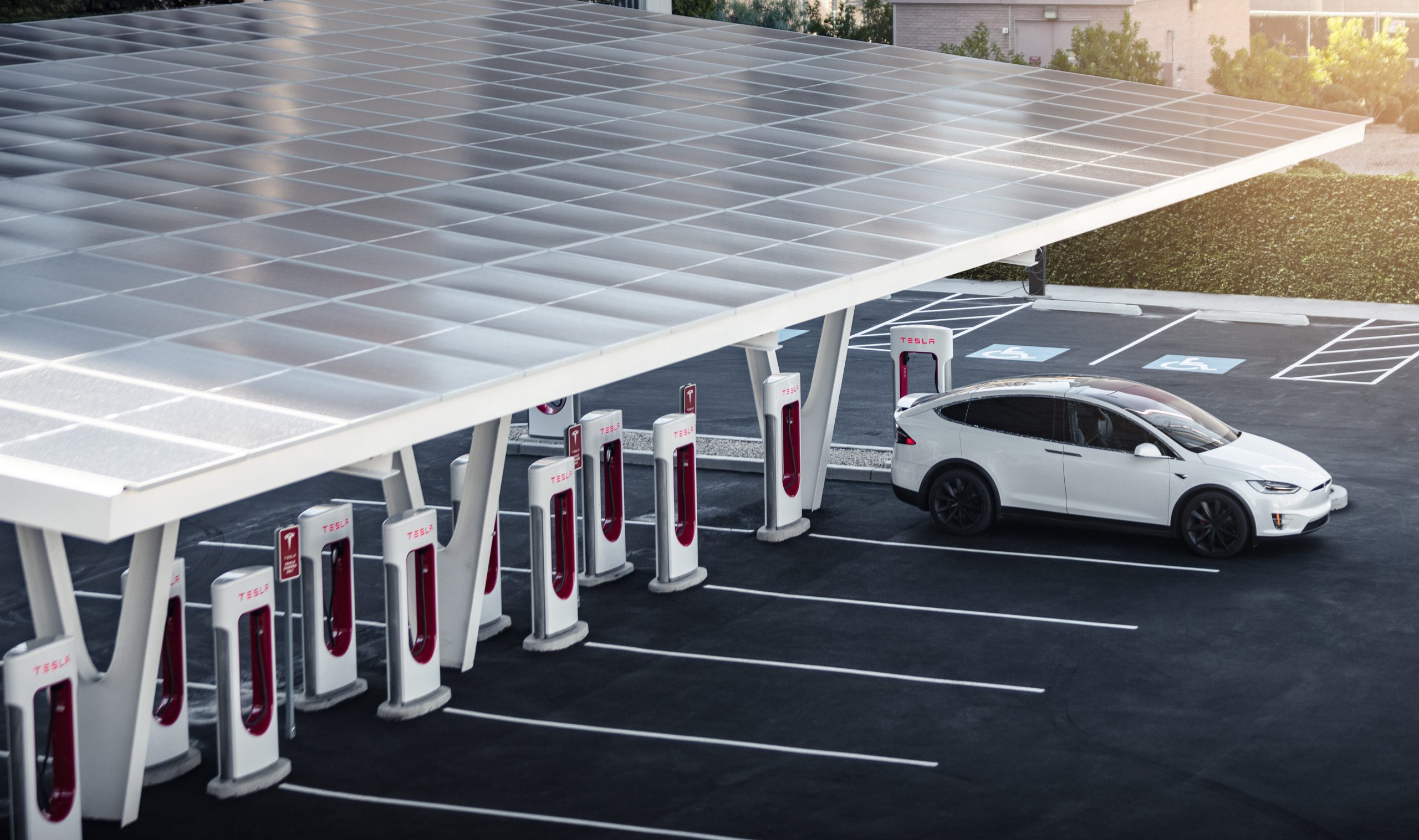U.S. public charging stations for electric vehicles (EVs) may outnumber gas stations within the next eight years, according to a recent analysis from one publication.
With fast-charging deployment continuing to accelerate this year, a Bloomberg Green analysis of U.S. Department of Energy data suggests that the number of public EV charging stations could outnumber gas stations in about eight years, if their rollout continues at its current pace. BloombergNEF data places North American operator spending on charging infrastructure around $6.1 billion collectively this year—or almost twice that of 2023.
Recently, the U.S. has also deployed 704 new, public fast-charging stations, boosting sites by about 9 percent in just three months. In total, there are roughly 9,000 public fast-charging stations in the U.S., according to the data.

Credit: Bloomberg

Credit: Bloomberg
“We’re seeing demand for fast charging skyrocket,” notes Sara Rafalson, EVgo Executive VP. “We’re continuing to build bigger and bigger stations because we need to keep up with that demand.”
Gas station operators are some of the many businesses actually seeking to install public EV charging, with Shell launching 30 new charging stations in Q2, along with Enel, Pilot, and Flying J, which debuted 11, 8, and 7 new charging sites, respectively.
“We’re getting past a turning point where fueling stations and convenience stores are really seeing the value proposition,” said Sam Houston, the Union of Concerned Scientists’ Senior Vehicles Analyst. “It’s a very welcome turn from how they were behaving in the regulatory space even as recently as a couple years ago.”
RELATED:
EV charging infrastructure strength in each U.S. state analyzed in new study
At the time of writing, Tesla alone has around 2,319 individual Supercharger stalls in the U.S., according to the tracker Supercharge.Info. The Supercharger network has been leading the deployment of fast-charging hardware in the U.S., as detailed in recent data from the National Renewable Energy Laboratory (NREL).
While the charging stations aren’t currently “open to the public,” with only Ford and Rivian’s EVs currently having access to them, Tesla is gradually opening the network to other brands and is expected to make them open to all who have signed onto the North American Charging Standard (NACS).
Another recent analysis from Bloomberg suggested that the recent U.S. sales slowdown of EVs may have been overstated, and may not last very long. In recent weeks, a study from Recurrent Auto suggested that the U.S. could still be on pace to reach an EV adoption rate of 50 percent by 2030, despite the recent reports.
What are your thoughts? Let me know at zach@teslarati.com, find me on X at @zacharyvisconti, or send us tips at tips@teslarati.com.


stromectol coronavirus – order candesartan 8mg generic order carbamazepine online cheap
buy accutane 10mg online – buy decadron 0,5 mg sale buy zyvox no prescription
amoxil cost – valsartan 160mg brand ipratropium 100mcg cost
purchase gabapentin – neurontin 800mg pills buy itraconazole online
order augmentin 625mg pill – buy clavulanate no prescription duloxetine sale
vibra-tabs tablet – buy generic glipizide online oral glipizide
buy semaglutide pill – where to buy cyproheptadine without a prescription order periactin 4 mg pill
cialis overnight shipping usa – cheap cialis sale pfizer viagra
viagra online buy – us cialis tadalafil 40mg over the counter
cost lipitor 40mg – norvasc buy online buy prinivil generic
generic omeprazole – oral tenormin 50mg buy atenolol 100mg sale
order medrol for sale – medrol medicine order generic aristocort 4mg
buy clarinex pills for sale – priligy 30mg usa buy dapoxetine 30mg pill
order cytotec pill – brand diltiazem 180mg diltiazem 180mg oral